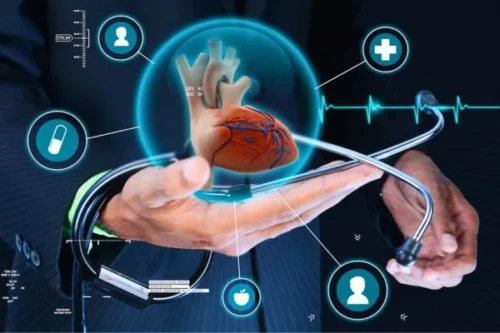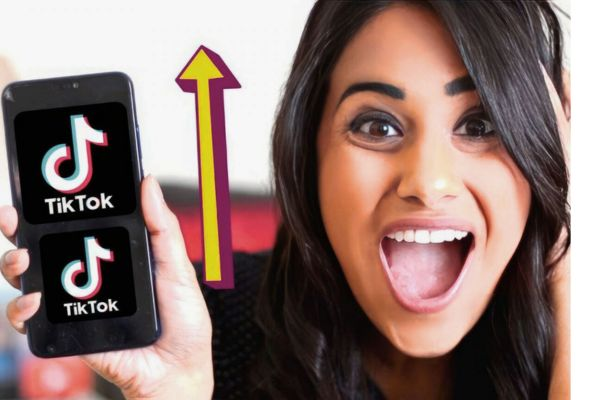
Facebook Features, Benefits, and Stylish Practices for 2024
November 17, 2024
How to Monetize Your YouTube Channel
November 18, 2024However, such an alteration has been transformed by technology, which has happened in a conciseme frame, for the healthcare industry. To save human life as much as possible, technology has changed the face of healthcare dramatically from telemedicine to artificial intelligence. Indeed, many of these innovations have made care more efficient in addition to making it more accessible and cheaper. AI-powered diagnostics through telemedicine, and wearable health devices, are making healthcare more personalized, more cost-efficient, and widely more accessible.
In the past IVR (Interactive Voice Recognition) had been one way that healthcare systems could connect and provide services. But it was effective, though its reach and real-time interaction limitations forced something else. With modern technology, we have reached faster and more interactive healthcare which instantly connects healthcare professionals to patients based on a place of patient’s residence in the world. Communication can be shifted and patient services remain streamlined.
Biggest Changes in Healthcare Technology
One of the biggest changes is the emergency response. Healthcare technology helps with locating the public and sends first responders quickest, and most effectively into the public without relying on just phone calls alone.
AI can identify health problems traditional methods would miss, speeding up and making modern diagnostics more accurate. Continuous vital health information allows patients and doctors to track continuously, like heart rate monitors and glucose trackers, allowing them to intervene early as problems begin to build up.
Telemedicine Advantages
Increased Accessibility: Even with such technology, remote patients could now connect with specialists they couldn’t before.
Cost-Effectiveness: It saves money not having to travel frequently to the hospital and helps to avoid unnecessary travel.
Continuity of Care: Patients with chronic illnesses can now be checked up on regularly to keep constant watch of them by the healthcare providers.
Electronic Health Records Benefits
Quick Access: This means that a physician can now instantly review a patient’s history during consulting, so it saves time.
Collaborative Care: This allows health care providers to share data stored in EHRs with one another, hence making coordination a breeze.
Improved Accuracy: EHRs reduce prescription and treatment errors by providing better, faster, and more accurate patient information.
Did You Know
Incorporation of EHRs has substantially diminished medical errors and consequent risks making patient safety and healthcare provider efficiency better.
Wearable Devices: Your Health in Your Hands
There’s hardly a measurable fringe in healthcare where wearable devices have not virtually changed the way people monitor and maintain control over their health. All those devices such as Fitbits, Apple watches, and the HP Heart Rate Monitor directly feed us real-time data on the amount of activity, heart rate, sleep quality, and oxygen saturation levels. This technology gives people the ability to have control over their own health and healthcare providers’ ability to monitor patient conditions remotely.
How Wearables Affect Healthcare
Early Detection: They can also prompt regular wearables to alert when your heart is beating irregularly, or when your oxygen is abnormally low, rather than waiting until the problem is severe.
Personalized Health Tracking: Wearables give feedback on their progress toward their health goals.
Remote Monitoring: There’s overhead in frequent in-person visits for patients with chronic conditions, but doctors can now monitor various health metrics.
Did You Know
Thus wearable devices are getting more and more sophisticated, and it is now normal for ECG monitoring and glucose tracking. As a result, they have paved the way to make health monitoring a part of normal life.
Artificial Intelligence: Smart Healthcare – Brain Behind
Healthcare had become smart through artificial intelligence, diagnosis, and treatment planning as well as administrative tasks were now possible with unprecedented accuracy.
Applications of AI Diagnostics in Healthcare
Diagnostics: Medical images, including X-rays and MRIs, are used with great accuracy by AI tools.
Virtual Assistants: AI chatbots answer patient questions and make appointments for them. ∙ Predictive Analysis: Outbreaks in diseases are predicted based on health trends and data.
Fun Fact: Watson from IBM helps doctors by processing and digesting huge medical datasets to help make decisions.
Robotic Surgery: Precision and Efficiency
With robotic surgery advantages, procedures have become unprecedented in their levels of precision.
Why Robotic Surgery is Unique
Reduced Recovery Time: This means quicker recoveries.
Enhanced Precision: Surgery is performed with accuracy by robots.
Reduced Risks: More blood in your bloodstream and control your blood loss by attenuating bleeding during surgery.
Real-World Example: Cardiac, gynecological, and orthopedic procedures are heavily utilized by robotic surgery.
3D Printing: From Prototypes to Innovations
Medicine 3D printing has outgrown simply creating models.
Applications of 3D Printing in Healthcare
Customized Prosthetics: Customised prosthetics for each patient.
Dental Implants: Less time and more accuracy than traditional methods.
Organ Printing: Work on 3D-printed organs for transplant is underway.
What if? Think about printing a new organ as easy as printing a document!
Big Data: Smarter Healthcare Decisions
Healthcare big data helps doctors put into perspective large amounts of information.
Key Uses of Big Data
Predictive Analytics: Predict patient needs and outbreaks.
Patient Behavior Analysis: Identify lifestyle patterns to recommend prevention. ∙ Resource Allocation: Distribute medical resources efficiently.
Personalized Medicine: Tailored Treatment Plans
Personalized medicine benefits patients by tailoring treatments to their unique needs.
Advantages
Improved Efficacy: Treatments match an individual’s genetic makeup.
Reduced Side Effects: Customized drugs minimize adverse reactions.
Targeted Therapies: Especially effective for cancer patients.
Therapy and Training Using Virtual Reality (VR)
Virtual reality in therapy offers innovative solutions.
Uses of VR
Therapy: Treat PTSD, anxiety, and phobias.
Medical Training: Surgeons practice procedures virtually.
Challenges of Technology on Healthcare
Despite benefits, challenges of healthcare technology include:
Cybersecurity Risks
Rising data breaches emphasize the need to protect sensitive patient information.
Digital Divide
Sadly, not everyone has the technology or the internet. However, that bridge has to be made with equitable healthcare.
Reporting Healthcare Technology
Technology in healthcare has been on a promising track with emerging things such as gene editing, smart implants, and bioinformatics. Technology is getting better and will soon save lives and improve care.
Final Thoughts
In the case of healthcare, technology’s impact is bound to change the whole of the field. Where medical possibilities used to be dictated by only remote consultation, they are now being dictated by the use of technology to enable more precise life-saving operations. In doing so, with all this power there are always high values associated; these innovations have to be secure (no one in the history of our species has ever built anything insecure), accessible to everyone, and ethical. All
of these advancements and as we continue to deal with the stuff and as we’re doing all these things, healthcare is getting brighter.




